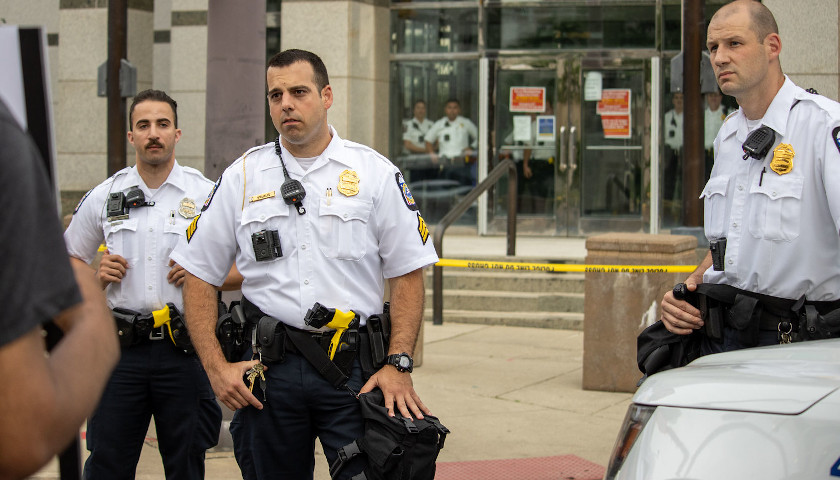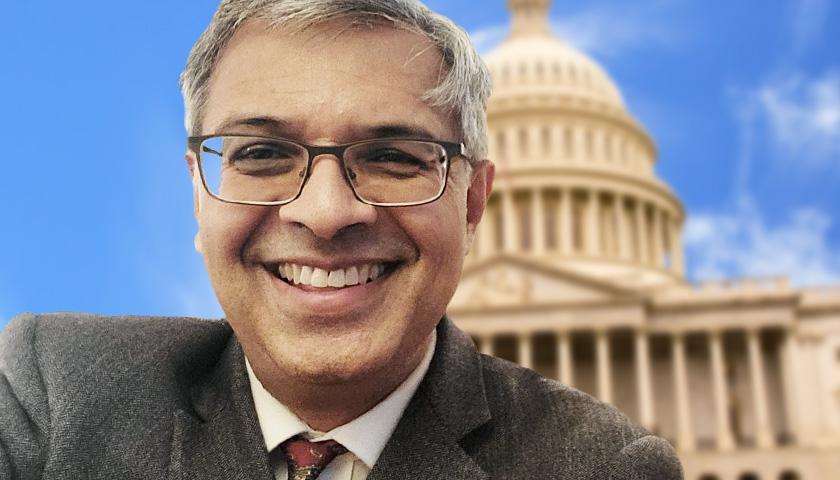The Columbus City Council is working on legislation to screen the police for affiliations with hate groups or for harboring beliefs consistent with these groups.
Last Monday, Shayla Favor, a councilmember and chair of the Criminal Justice Committee, held a meeting at which she presented the outlines of her legislative initiative. There will be another hearing on Wednesday, July 22, at 3 p.m. Favor will then finish drafting police-screening legislation and include it in a larger piece of public safety legislation that will be presented to the city council on July 27, the last meeting before the August recess.
To be included in this legislative package are measures to demilitarize the police and changes to what are known as “no-knock” warrants. Provisions to independently investigate the use of police force via a civilian review board will require a change to the city charter, said Favor’s legislative aide Tyneisha Harden in an interview with The Ohio Star. The legislation will include a request to put the change on November’s ballot.
This entire initiative, Favor said, developed in response to the local and nationwide “public outcry” following the death of George Floyd in Minneapolis in May and to other instances of alleged police brutality. As well, last August, a third-party operational review of the city’s police division found “significant disparity of use of force against minority residents.”
From 2013 through 2017, black residents were involved in about half of use-of-force incidents, while comprising 28 percent of the city’s population. In contrast, whites were involved in about 28 percent of such incidents, while making up 61 percent of the population. The report recommended addressing this disparity “by continuing intense training, education, monitoring and reporting on use of force within the Division.” The report did not address the disparities in crime rates among racial and ethnic groups.
According to the Columbus Dispatch, the justice committee’s scrutiny is also “in response to what city officials saw as over-aggressive Columbus police tactics during protests and riots that began Downtown May 28, three days after Floyd’s death.”
Favor began by listing the meeting’s goals: to “define hate groups and what could be considered affiliation with hate groups, review the current background check process for Columbus police officers [and] determine what actions are legally within the scope of the city council’s authority.”
To define what constitutes a hate group, Favor read aloud the Southern Poverty Law Center’s (SPLC) definition: “an organization that – based on its official statements or principles, the statements of its leaders or its activities – has beliefs or practices that attack or malign an entire class of people, typically for their immutable characteristics.”
“Any Columbus police recruits that have a history of affiliation with a hate group,” said Favor, “should be booted out of the process before they are placed on our streets.”
According to Jennifer Webb, PsyD, a psychologist who works on the screening process, stability is the main quality sought during lengthy interviews. Questions to recruits involve their relationships, social groups and activities. Before hiring a recruit, the city has considerable more latitude in the selection process than in dealing with active police officers.
Favor also stated strongly that current police officers with hate-group affiliations “should not be serving our residents.” As one remedy, Favor presented a recommendation from the Columbus Community Safety Advisory Commission that officers would be required, she said, to sign a “morality clause … that would require them to agree to equal protection for all citizens, to denounce any cultural supremacist groups and to report any officer’s malfeasance to Internal Affairs.”
Near meeting’s end, City Council President Shannon G. Hardin echoed Favor’s emphasis that the council isn’t implying that the city’s police are “bad people.” He said, “Fundamentally, I don’t believe that our police divisions are any more racist than any other institution. I think policing is a microcosm of our society. The true work [is] going to be done by focusing on communities as well and rooting out and acknowledging racism in every form everywhere throughout our society.”
Since last week’s hearing, Favor and her office have been dealing with issues that were raised by other stakeholders and the public in response to her articulation of the police screening initiative.
No one has expressed opposition to the initiative, Tyneisha Harden said, but common questions included First Amendment rights. In the wake of the recent protests and riots, there has been a significant increase in social media activity by police offers, Harden remarked. In order to determine where to draw the line, especially when officers are posting as private citizens, she pointed to the answer as a function of whether an affiliation or set of beliefs prevent an officer from doing his or her job.
Also questioned was using the Southern Poverty Law Center (SPLC) as the hate-group arbiter. “They are one of the only organizations that attempt to make a list,” Harden said. “But we are not endorsing the entire list.” She pointed out that all hate groups might not be captured by SPLC’s list, and other groups wouldn’t fit the definition of hate group that Favor’s committee is developing.
Judson L. Jeffries, PhD, a professor of African American and African Studies at Ohio State University, pointed out at the hearing that some hate groups operate clandestinely, making identification difficult.
He also raised the question of what to do with an officer once a hate-group affiliation is uncovered. Responses to this and other issues are being dealt with – and quickly. Less than a week remains before the city council will consider the legislation next Monday, the 27th.
– – –
Patrick J. McCloskey is a reporter at The Ohio Star. Send tips to [email protected].
Photo “Columbus Police Officers” by Becker1999. CC BY 2.0.





